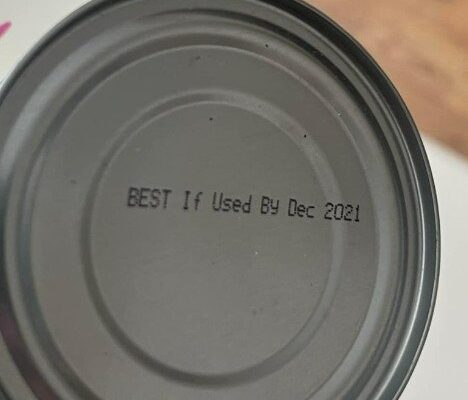Is Expired Food Safe to Eat? The Truth About Expiration Dates
Food labeling can be confusing. Here’s what you need to know to get the most out of your groceries.
Ninety percent of Americans, according to a National Resources Defense Council survey, throw out food too soon.
A large portion of this waste is attributable to an unclear, unregulated food dating system.
In fact, according to the United States Department of Agriculture (USDA) website, federal regulations do not mandate product dating—that is, except it comes to infant formula. The “expiration dates” or “food dates” that we are so acquainted with are merely the manufacturer’s recommendation for when their product is at its peak quality; they are in no way indicative of food safety.
What does this entail for the customer, then? It’s possible that both of us are throwing away food that is still completely safe to consume. Understanding common food labels and their significance is the greatest method to fight this waste. In this article, we’ll explain the reasons behind these food labels and provide broad recommendations for how long your groceries should really last you.
What Common Date Labels Actually Mean
So we’ve established that food labels refer to quality, not safety. This begs the question, what are our food labels telling us about the quality of our food? And what’s the difference between sell by, use by, best by, and all the other labels? Let’s break it down here:
Sell By
The sell-by date simply tells retailers how long to display the product before taking it off the shelves. It’s in no way an indication of safety. Grocery stores will often try to get rid of this old inventory through sales, so be on the lookout!
Best If Used By/Before
Probably the most commonly heeded food date is the best by date, because, let’s face it, the name is a little misleading. As with other food dates, this label doesn’t indicate when a product is “best” in terms of safety, but rather in terms of quality. So the best-by date simply refers to when a product will be at best flavor or quality.
Guaranteed Fresh
This date usually refers to bakery items. It simply indicates when the item will be at peak freshness, but it’s still safe to eat after this date.
Use By
This refers to the last date recommended by the manufacturer for use of the produce while at peak quality. The only time this refers to safety is in the case of infant formula.
Pack
The pack date is the code that refers to the date the food was washed, graded, and packaged. This is most commonly found on egg cartons. The tricky thing with this label is it’s not the easiest to read. The label will look like a three number code that represents the day of the year that it was packed. For example, 001 would refer to January 1, and 365 would refer to December 31.
Freeze By
This date indicates when a product should be frozen to maintain peak quality as long as it’s frozen.
How to Know If Food Has Gone Bad
We are going to share general guidelines as to how long different types of foods are safe to eat — keyword here being general. What’s most important to know about food safety are the signs of spoilage.
According to the USDA, “If the date passes during home storage, a product should still be safe and wholesome if handled properly until the time spoilage is evident.” Common signs of spoilage include an off odor, flavor, or texture due to naturally occurring spoilage bacteria. Of course, mold is also an indicator.
But sometimes, even the sight or sniff test isn’t enough to determine whether or not food has gone bad. Refer to the chart below for general guidelines from the USDA on when it’s time to toss and when it’s not. For information on when to toss leftovers, refer to our guide here.
How Long Are Foods Safe to Eat? General Food Guidelines
The food storage guidelines come from the USDA Food Safety and Inspection Service:
Refrigerated Foods
- Ground Meat and Stew Meat: 1-2 days
- Fresh Meat (Beef, Veal, Lamb and Pork): 3-5 days
- Fresh Poultry: 1-2 days
- Lunch Meat: 2 weeks unopened, 3-5 days opened
- Fresh Fish and Shellfish: 1-2 days
- Eggs, fresh in shell: 3-5 weeks
- Mayonnaise: 2 months
- Milk: 1-2 weeks
Non-refrigerated Foods:
- Rice and dried pasta: 2 years
- High-acid canned foods (such as tomatoes, grapefruit, pineapple): 12-18 months unopened
- Low-acid canned foods (such as meat, poultry, fish, vegetables): 2-5 years, unopened
How to Stretch Food Past Its Expiration Date
If you can’t finish your food before it goes bad, there are a number of ways you can stretch it well past the expiration date. Refer to our guide on how to safely freeze, thaw, and reheat food. Make the most of seasonal produce canning fresh fruits and veggies for enjoyment well into the winter months.
Just remember that even with these preserving methods, the food will only be as fresh as it was at the time you stored it. Keep food from spoiling before you have a chance to freeze or can it by keeping it out of the “temperature danger zone,” as much as possible. This is the range from 40 degrees Fahrenheit to 140 degrees Fahrenheit in which bacteria grows the most rapidly.



